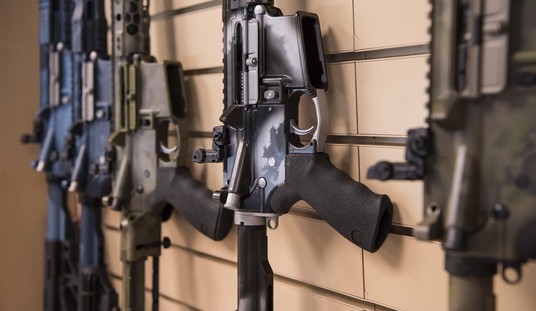We're still waiting to see what the Supreme Court does in Rahimi and Cargill, but gun owners did get some very good news from the federal courts on Thursday. A U.S. District Judge in Texas has vacated the ATF's rule treating pistols equipped with stabilizing braces as short-barreled rifles; granting relief not only for the named plaintiffs involved in the litigation, but for every gun owner across the country who owns a brace.
In his decision, U.S. District Judge Reed O'Connor ruled that the ATF's rule treating most pistol braces as accessories that turn pistols into SBRs violated the Administrative Procedures Act in a number of ways.
For close to a decade, the ATF concluded that “attaching the brace to a firearm does not alter the classification of the firearm or subject the firearm to NFA control.” The ATF changed course on this position for the first time in 2023, when it issued the Final Rule reversing the agency’s otherwise long-standing policy. “When an agency changes course, as [the ATF] did here, it must ‘be cognizant that longstanding policies may have engendered serious reliance interests that must be taken into account.’” Dep’t of Homeland Sec. v. Regents of the Univ. of Cal., 591 U.S. 1, 30 (2020) (quoting Encino Motorcars, LLC v. Navarro, 579 U. S. 211, 222 (2016)). “It would be arbitrary and capricious to ignore such matters” Id. But this is exactly what Defendants did when they inexplicably and fundamentally switched their position on stabilizing braces without providing sufficient explanations and notice.
Under the Final Rule, the ATF estimated about 99% of pistols with stabilizing braces would be reclassified as NFA rifles. The ATF contemporaneously issued approximately sixty adjudications pursuant to the Final Rule that reclassified different configurations of firearms with stabilizing braces as NFA rifles. The ATF provided no explanations for how the agency came to these classifications and there is no “meaningful clarity about what constitutes an impermissible stabilizing brace.” Mock, 75 F.4th at 585 (5th Cir. 2023). In fact, the Fifth Circuit “[could not] find a single given example of a pistol with a stabilizing brace that would constitute an NFA exempt braced pistol.” Id. at 575. Such “‘unexplained’ and ‘inconsistent’ positions” are arbitrary and capricious. R.J. Reynolds Vapor Co. v. FDA, 65 F.4th 182, 191 (5th Cir. 2023) (quoting Encino Motorcars, 579 U.S. at 222).
The Defendants’ disregard for the principles of fair notice and consideration of reliance interests is further exacerbated by its failure to follow the APA’s procedural requirements for public notice and comment. As discussed above, Defendants failed to follow proper notice-and comment procedures because the Proposed Rule and the Final Rule differed in immense ways.
O'Connor also held that the ATF's final rule on stabilizing braces was "impermissibly vague", noting that while the ATF developed a worksheet that ostensibly allows gun owners to see if their brace-equipped pistol falls under the rule, the ATF itself still has "complete discretion to use a subjective balancing test to weigh six opaque factors on an invisible scale" to determine the legality of a brace-equipped pistol.
Consequently, the Court finds that the Final Rule’s six factor test is so impermissibly vague that it “provides no meaningful clarity about what constitutes an impermissible stabilizing brace,” and, thus, that “it is nigh impossible for a regular citizen to determine what constitutes a braced pistol” that “requires NFA registration.” Id. at 584–85. Accordingly, Plaintiffs’ Motion for Summary Judgment is GRANTED and Defendants’ Motion for Summary Judgment is DENIED as to this issue.
This is a big win for the Firearms Policy Coalition and their co-plaintiffs in the case, and it should provide some meaningful protection for the immediate future. The DOJ will almost certainly appeal O'Connor's decision, but Merrick Garland and company aren't likely to find a lot of allies in support of the rule at the Fifth Circuit Court of Appeals, which would be the next stop for the case. Garland could try to appeal directly to the Supreme Court on the issue, but SCOTUS has been reluctant to hear interlocutory appeals from gun owners in the two years since Bruen, and there's no guarantee the Court would take up Mock v. Garland before the Fifth Circuit has a chance to weigh in on O'Connor's decision.
For the time being, the rule is dead. And depending on what the Supreme Court does with the Cargill case, it might not be the only ATF rule to succumb to court scrutiny this week. SCOTUS is scheduled to release more decisions from this term on Friday, and the challenge to the bump stock ban could be among the cases that are decided this week.









Join the conversation as a VIP Member